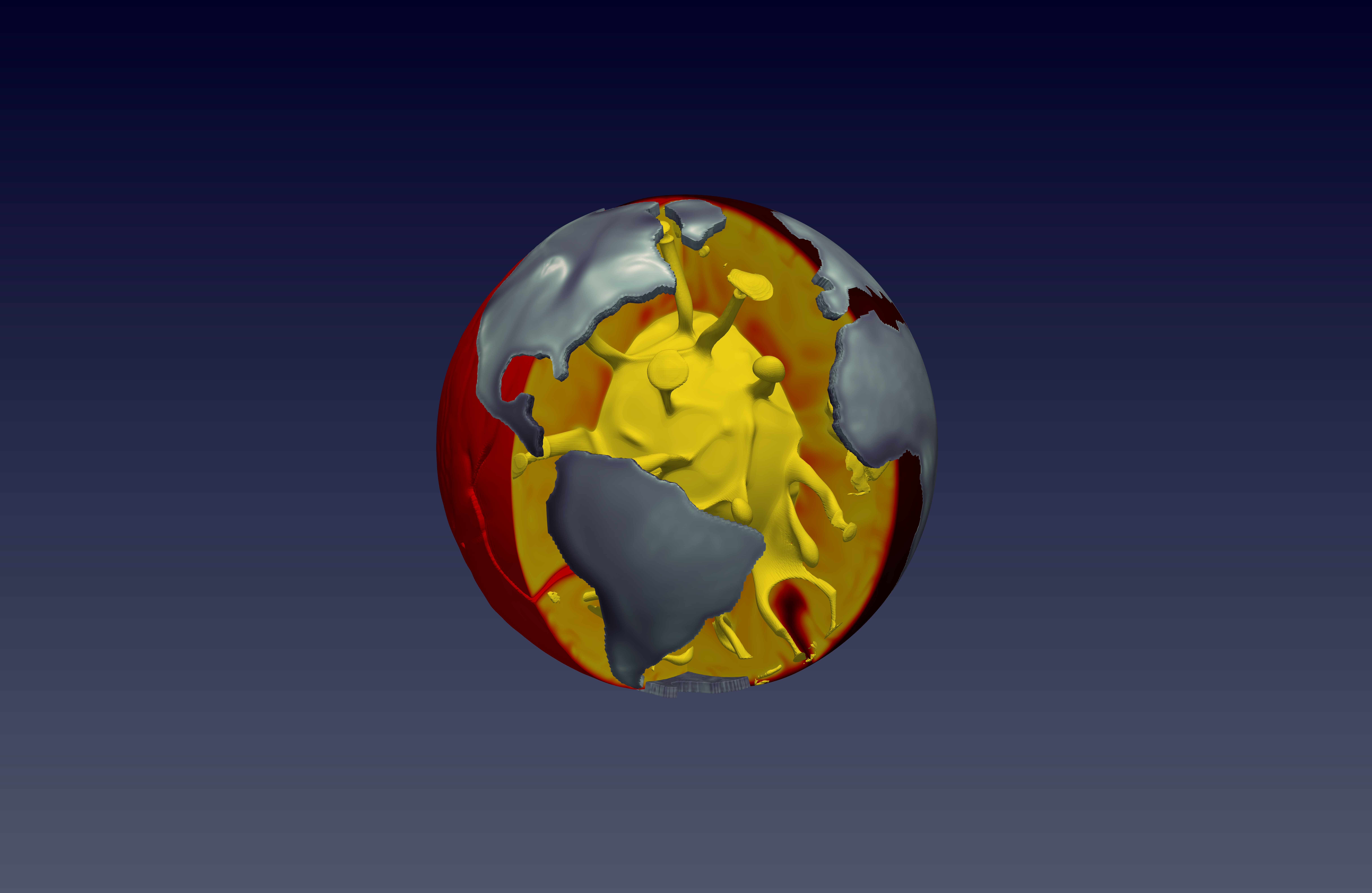Image Description: The goal of this study was to incorporate different continental configurations in a high-resolution 3-D model to investigate the influence of the super-continent cycle on convection in the deep interior of the Earth. The study entails performing numerical analyses on Compute Canada’s high-performance computing clusters. The image shows a snapshot from a mantle convection model with Earth’s current-day continents and includes various contours encompassing different material (e.g., continents vs. the ambient mantle) and high-temperature plumes.
Why did you conduct this research? Mantle convection is a primary factor in determining the evolution of rocky planets like the Earth. The existence of continents and a chemically dense primordial layer near the core heavily impacts the evolution of the planet and our understanding of its past. The question of how Earth evolved into its current state, as opposed to conditions similar to those found on Venus, the impact of continents on the interior (mantle) and their subsequent influence on the atmosphere requires a careful and extensive investigation of mantle convection.
Technique: This image shows the visualization of one of our models (with nearly 11 million grid nodes and 420 million particle tracers) which contains Earth’s current-day continents and a deep primordial layer in the mantle. The model is sliced and contoured to reveal different temperatures and types of materials (e.g., the ambient mantle vs. the continents). While interior is coloured according to the temperature, the continents are coloured based upon their viscosity. These temperature contours and compositional slices allow us to better identify mantle plumes, surface divergence, weak zones, and stress sources at different depths.
Acknowledgements: This visualization is taken from an on-going project guided by Profs. Julian Lowman (at UTSC) and Paul Tackley (at ETH Zurich), following a summer research term at the Centre for Research in Earth System Science (CRESS) and NSE-UTEA undergraduate summer research fund.

